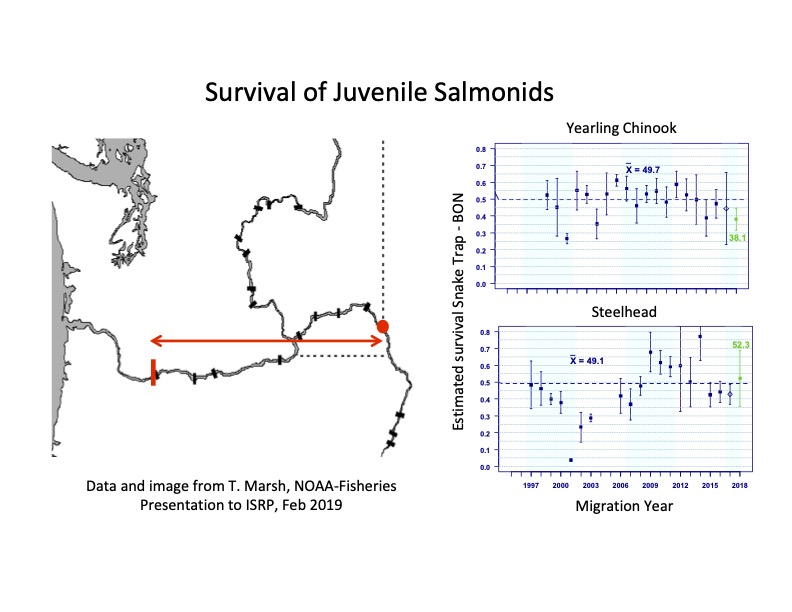forum
library
tutorial
contact

Washington Punts on Fate of
Lower Snake River Dams
by Jeremy P. Jacobs
Greenwire, December 23, 2019
|
the film forum library tutorial contact |

|
Washington Punts on Fate of
by Jeremy P. Jacobs
|
The task force's report was emphatically criticized by lawmakers
who represent the area where the four dams are located.
 Washington state on Friday reached no conclusion about whether four dams blamed by environmentalists for decimating salmon runs should be breached.
Washington state on Friday reached no conclusion about whether four dams blamed by environmentalists for decimating salmon runs should be breached.
The state released a draft report that instead found "differing perspectives" on how removing the four Lower Snake River dams -- the focus of years of litigation and the most expensive endangered species program in U.S. history -- would affect fish, endangered orca whales in Puget Sound and the region's economy.
"The future of the [Lower Snake River dams] is inextricably linked to the future of southeast Washington, Washington state and the Pacific Northwest," the report said.
It was prepared for Gov. Jay Inslee's (D) orca task force because many conservationists have linked the declining salmon numbers returning up the Columbia River to spawning grounds on its main tributary, the Snake, to the orcas' struggles. Salmon are the whales' primary food.
The report said it did not seek to reconcile divergent perspectives on the dams and their value. But it stated that it will inform Inslee's perspective on the dams.
In a quarter-century, many studies have looked at the four dams, "yet no clear consensus" about the impacts of breaching the dams has emerged, the report concluded.
It added that "more information is needed" to resolve the "complex issues and decisions," including how breaching would affect the state's farmers, many of whom rely on the dams to barge their crops for export, and energy in the region.
The four Lower Snake River dams were among the last completed following the New Deal-era push to bring cheap hydropower to the Columbia River basin. Ice Harbor Dam was completed in 1961, Lower Monumental in 1969, Little Goose in 1970 and Lower Granite in 1975.
Their impact on the region's iconic salmon and steelhead has been fiercely contested nearly ever since.
Including the Lower Snake River dams, the fish must navigate eight dams in total going to and returning from the ocean.
All the salmon and steelhead native to the Snake River are listed as threatened or endangered, despite the most expensive recovery program in the country's history. It has cost the Bonneville Power Administration, which markets and sells the power from the dams, nearly $17 billion.
Yet recent numbers by the nonpartisan Fish Passage Center suggest the Snake River fish are not recovering and, in fact, may be moving closer to extinction (Greenwire, Sept. 25).
The task force's report was emphatically criticized by lawmakers who represent the area where the four dams are located, Washington Reps. Cathy McMorris Rodgers and Dan Newhouse.
Both proponents of keeping the dams, the Republicans slammed the report as a waste of $750,000 in taxpayer dollars, and they criticized Inslee.
"We had no idea a year ago when we said this study would be a wasteful use of taxpayer dollars just how accurate we'd be -- imagine how far $750,000 could have gone to directly support salmon recovery efforts," they said in a joint statement.
A draft of a court-ordered environmental impact statement on the dams is due in February.
learn more on topics covered in the film
see the video
read the script
learn the songs
discussion forum
